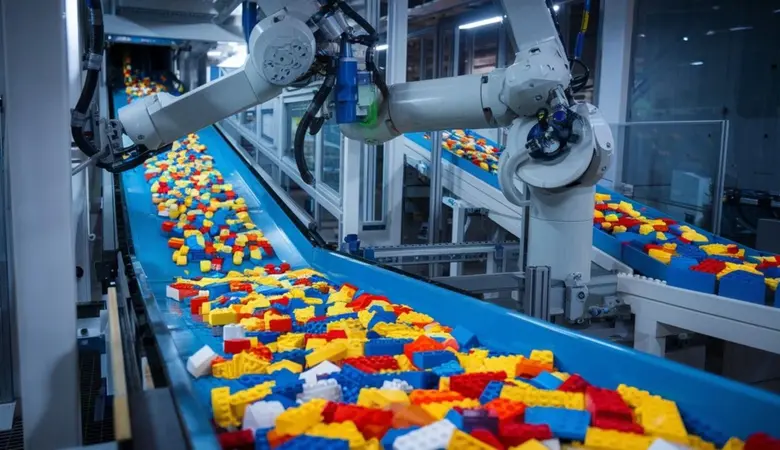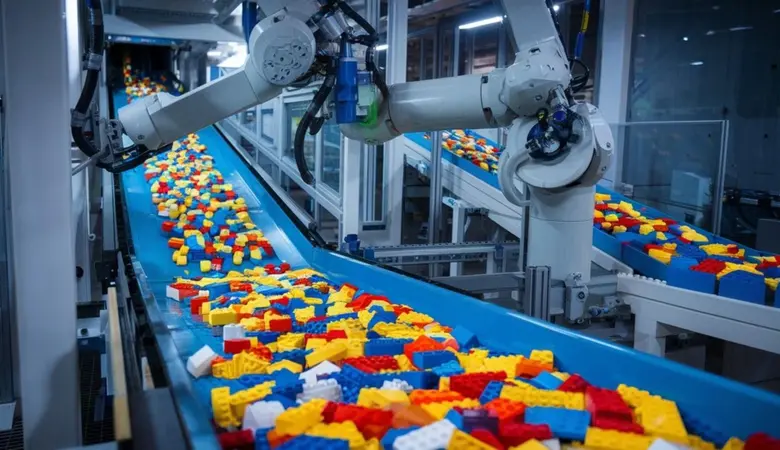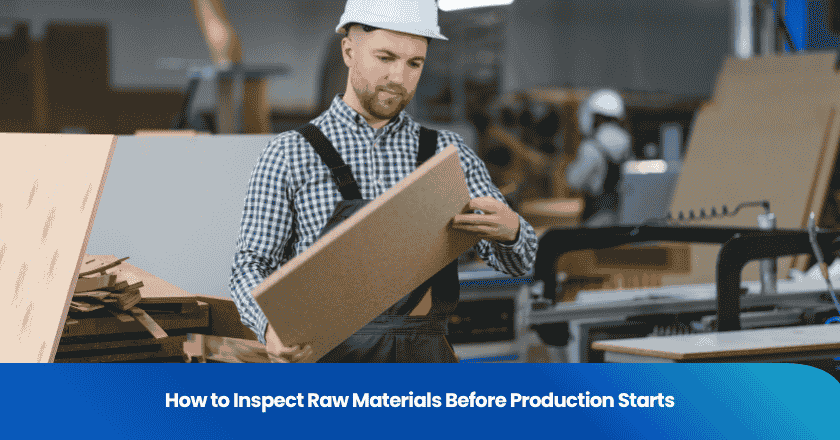
Toy manufacturers face strict safety and compliance demands in today's global market. They must work with a reliable china toy quality control supplier to ensure every product meets international standards. Certifications like CE, ISO, EN71, and ASTM play a key role. Regions such as Shantou, Yiwu, Huizhou, and Dongguan serve as major supplier hubs. Careful due diligence and clear communication help minimize risks at every inspection stage.

Key Takeaways
• Set clear safety and inspection standards before partnering to meet international toy regulations and avoid risks.
• Research suppliers in key Chinese regions like Shantou and Yiwu to find experienced and reliable quality control partners.
• Verify supplier certifications such as CE, ISO, EN71, and ASTM to ensure compliance with global safety requirements.
• Compare service proposals and review supplier capabilities carefully to choose a partner that fits your quality needs.
• Maintain open communication and regularly review supplier performance to keep quality control effective and improve over time.
Define Quality Needs
Safety Standards
Toy manufacturers must prioritize safety standards before starting any partnership. International markets require strict compliance with regulations such as CE, EN71, ASTM, and ISO. These standards protect children from hazards like choking, toxic materials, and sharp edges. Each market may enforce different rules, so companies should identify which certifications apply to their products.
Tip: Create a checklist of all relevant safety standards for each target market. This approach helps teams stay organized and ensures no requirement gets overlooked.
Manufacturers should also consider age-appropriate labeling, mechanical and physical property tests, and chemical composition limits. By setting clear safety benchmarks, companies reduce the risk of recalls and legal issues.
Inspection Requirements
Inspection requirements form the backbone of any quality control process. Companies must decide which inspection stages to include, such as pre-production, in-line, and final random inspections. Each stage serves a unique purpose:
• Pre-production inspection: Verifies raw materials and components meet specifications.
• In-line inspection: Monitors production for consistent quality.
• Final random inspection: Checks finished products for defects before shipment.
A structured inspection plan should outline sampling methods, defect classification, and reporting protocols. Teams benefit from using detailed inspection checklists and clear acceptance criteria.
| Inspection Stage | Purpose | Key Focus Areas |
|---|---|---|
| Pre-production | Material and component verification | Safety, compliance |
| In-line | Ongoing quality monitoring | Workmanship, consistency |
| Final random | Finished product assessment | Defects, packaging |
By defining inspection requirements early, companies set clear expectations for their quality control partners. This step ensures every toy meets both regulatory and customer standards.
Find China Toy Quality Control Supplier
Supplier Research
Companies seeking a reliable chinatoy quality controlsupplier should begin with thorough supplier research. The toy industry in China centers around several key regions. Shantou, known for its extensive toy manufacturing base, offers a wide range of suppliers with experience in export markets. Yiwu stands out for its vast wholesale markets and access to diverse toy categories. Huizhou and Dongguan both provide advanced manufacturing capabilities and a strong focus on quality control.
Tip: Focus research on suppliers located in these regions to benefit from established industry clusters and streamlined logistics.
A systematic approach helps narrow down the list of potential partners. Companies can use online directories, trade shows, and industry associations to gather information. Many organizations also consult with local sourcing agents who understand the regional landscape. When evaluating suppliers, teams should consider production capacity, specialization, and responsiveness to inquiries.
A shortlist of candidates allows for deeper investigation. Companies often request product samples, review factory profiles, and assess communication efficiency. This step ensures that the selected china toy quality control supplier aligns with the company’s product range and quality expectations.
Credentials Check
Verifying supplier credentials remains a critical step in the selection process. International certifications such as CE, ISO, EN71, and ASTM demonstrate a supplier’s commitment to safety and compliance. These certifications indicate that the supplier understands global regulatory requirements and follows standardized quality control procedures.
| Certification | Focus Area | Importance |
|---|---|---|
| CE | European safety standards | Required for EU market access |
| EN71 | Toy safety in Europe | Ensures child safety |
| ASTM | US safety standards | Required for North American sales |
| ISO | Quality management systems | Consistent process control |
Companies should request copies of these certificates and verify their authenticity with issuing bodies. In addition to certifications, many organizations choose to engage third-party inspection companies. These independent firms conduct on-site audits, review production processes, and provide unbiased quality assessments. Third-party inspections add an extra layer of assurance, especially when working with new suppliers or launching new product lines.
Note: Third-party inspection reports can reveal hidden risks and help companies make informed decisions.
A comprehensive credentials check reduces the risk of non-compliance and product recalls. By prioritizing certified suppliers and leveraging third-party expertise, companies strengthen their supply chain and protect their brand reputation.
Evaluate and Compare
Service Proposals
Companies often receive multiple service proposals from potential partners. Each proposal outlines the scope of services, inspection methods, and reporting formats. Teams should review these documents carefully to identify differences in approach and coverage. A clear proposal demonstrates the supplier’s understanding of industry requirements and attention to detail.
Key elements to compare in service proposals include:
• Inspection Scope: Does the proposal cover all required inspection stages, such as pre-production, in-line, and final random checks?
• Reporting Detail: Are sample reports provided? Do they include clear defect classifications and photographic evidence?
• Response Time: How quickly can the supplier schedule and complete inspections?
• Flexibility: Can the supplier adapt to urgent requests or changes in production schedules?
• Cost Structure: Are all fees transparent, including travel, overtime, and re-inspection charges?
Tip: Create a comparison table to visualize differences between proposals. This approach helps teams make objective decisions.
| Criteria | Supplier A | Supplier B | Supplier C |
|---|---|---|---|
| Inspection Scope | √ | √ | √ |
| Reporting Detail | High | Medium | High |
| Response Time | 24 hrs | 48 hrs | 36 hrs |
| Flexibility | Yes | No | Yes |
| Cost Structure | Transparent | Hidden fees | Transparent |
A thorough review of service proposals ensures that the selected partner can meet the company’s quality control needs and adapt to changing requirements.
Capabilities Review
Evaluating the capabilities of a china toy quality control supplier goes beyond reviewing documents. Teams should assess the supplier’s technical expertise, staff qualifications, and experience with similar products. Site visits or virtual tours provide valuable insights into the supplier’s operational standards.
Important factors to consider during a capabilities review:
• Technical Expertise: Does the supplier have experience with the specific types of toys being produced? Are inspectors trained in relevant safety standards?
• Equipment and Technology: Are modern testing tools and inspection equipment available on-site?
• Staff Qualifications: What certifications or training do inspectors hold? How often do they receive updates on regulatory changes?
• Quality Control Processes: Are there documented procedures for handling defects, reporting issues, and following up on corrective actions?
• Communication Skills: Can the supplier provide clear, timely updates in the preferred language?
A strong capabilities review helps companies avoid costly mistakes and ensures that the supplier can deliver consistent results.
Teams should also request references from other clients and review case studies or past inspection reports. This step provides real-world evidence of the supplier’s ability to handle complex projects and maintain high standards.
By carefully evaluating and comparing both service proposals and capabilities, companies can select a partner who aligns with their quality expectations and business goals.
Due Diligence & Agreements
Background Checks
Companies must conduct thorough background checks before finalizing any partnership with a china toy quality control supplier. Audits play a crucial role in this process. Teams often visit the supplier’s facility to observe daily operations and review quality control procedures. These audits help identify strengths and potential risks in the supplier’s workflow.
Checking references adds another layer of security. Companies should contact previous clients to gather feedback on reliability, communication, and problem-solving skills. A reference check often reveals how the supplier handles unexpected challenges or urgent requests.
Reviewing the supplier’s quality control processes is essential. Teams should request documentation that outlines inspection protocols, corrective action plans, and reporting systems. A well-documented process shows the supplier’s commitment to transparency and continuous improvement.
Tip: Use a checklist during audits to ensure all critical areas receive attention, such as staff training, equipment maintenance, and compliance records.
Negotiate Terms
Negotiating clear terms sets the foundation for a successful partnership. Confidentiality agreements protect sensitive product information and intellectual property. Both parties should agree on how to handle confidential data and who can access it.
Pricing discussions require transparency. Companies should request a detailed breakdown of costs, including inspection fees, travel expenses, and any additional charges. Clear pricing helps prevent misunderstandings and budget overruns.
Reporting protocols also need careful attention. Teams should define the format, frequency, and content of inspection reports. Regular updates keep everyone informed and allow for quick responses to quality issues.
A well-negotiated agreement ensures both sides understand their responsibilities and expectations. This step builds trust and supports long-term collaboration.
Monitor & Improve
Communication Setup
Effective communication forms the backbone of any successful partnership with a China toy quality control supplier. Teams should establish clear channels for daily updates, urgent notifications, and routine feedback. Email remains a standard tool for formal communication, while instant messaging apps can support quick responses and real-time problem-solving.
Tip: Assign a dedicated contact person on both sides to streamline information flow and reduce misunderstandings.
Regular meetings, either virtual or in-person, help both parties stay aligned on project timelines and quality expectations. Teams should document all key discussions and decisions. This practice creates a reliable record and helps resolve disputes if they arise. Visual aids, such as photos or videos from inspections, can clarify issues and speed up decision-making.
A well-structured communication plan should include:
• Defined points of contact
• Agreed response times for different types of inquiries
• Scheduled reporting intervals (daily, weekly, or per milestone)
• Protocols for escalating urgent issues
Clear communication reduces errors and builds trust between partners.
Performance Review
Continuous improvement depends on regular performance reviews. Companies should track key performance indicators (KPIs) to measure the supplier’s effectiveness. Common KPIs include inspection pass rates, defect rates, and on-time reporting.
Teams should review these metrics at set intervals, such as monthly or quarterly. If performance falls short, both sides should discuss root causes and agree on corrective actions. Open feedback sessions encourage transparency and foster a culture of improvement.
Regular performance reviews help companies maintain high standards and adapt to changing requirements.
By setting up strong communication and monitoring performance, companies can ensure their toy quality control processes remain effective and reliable.
Partnering with a china toy quality control supplier involves several essential steps. Companies define quality needs, research suppliers, and evaluate capabilities. They conduct due diligence and negotiate clear agreements. Ongoing monitoring and regular performance reviews help maintain high standards. Structured processes and open communication support continuous improvement. Safety and compliance remain top priorities throughout the partnership.
FAQ
What certifications should a China toy quality control supplier have?
Suppliers should hold certifications such as CE, EN71, ASTM, and ISO. These credentials show compliance with international safety and quality standards. Companies should always verify the authenticity of these certificates with the issuing organizations.
How often should companies schedule toy inspections?
Companies benefit from scheduling inspections at multiple stages: pre-production, in-line, and final random. This approach helps catch issues early and ensures consistent product quality throughout the manufacturing process.
Why is third-party inspection important?
Third-party inspection provides an unbiased assessment of product quality. Independent inspectors identify potential risks and verify compliance with safety standards. This extra layer of oversight helps companies avoid costly recalls and regulatory issues.
What should companies include in a quality control agreement?
A quality control agreement should cover inspection scope, confidentiality, pricing, and reporting protocols. Clear terms help both parties understand their responsibilities and reduce the risk of misunderstandings.
Grow your business with TradeAider Service
Click the button below to directly enter the TradeAider Service System. The simple steps from booking and payment to receiving reports are easy to operate.



